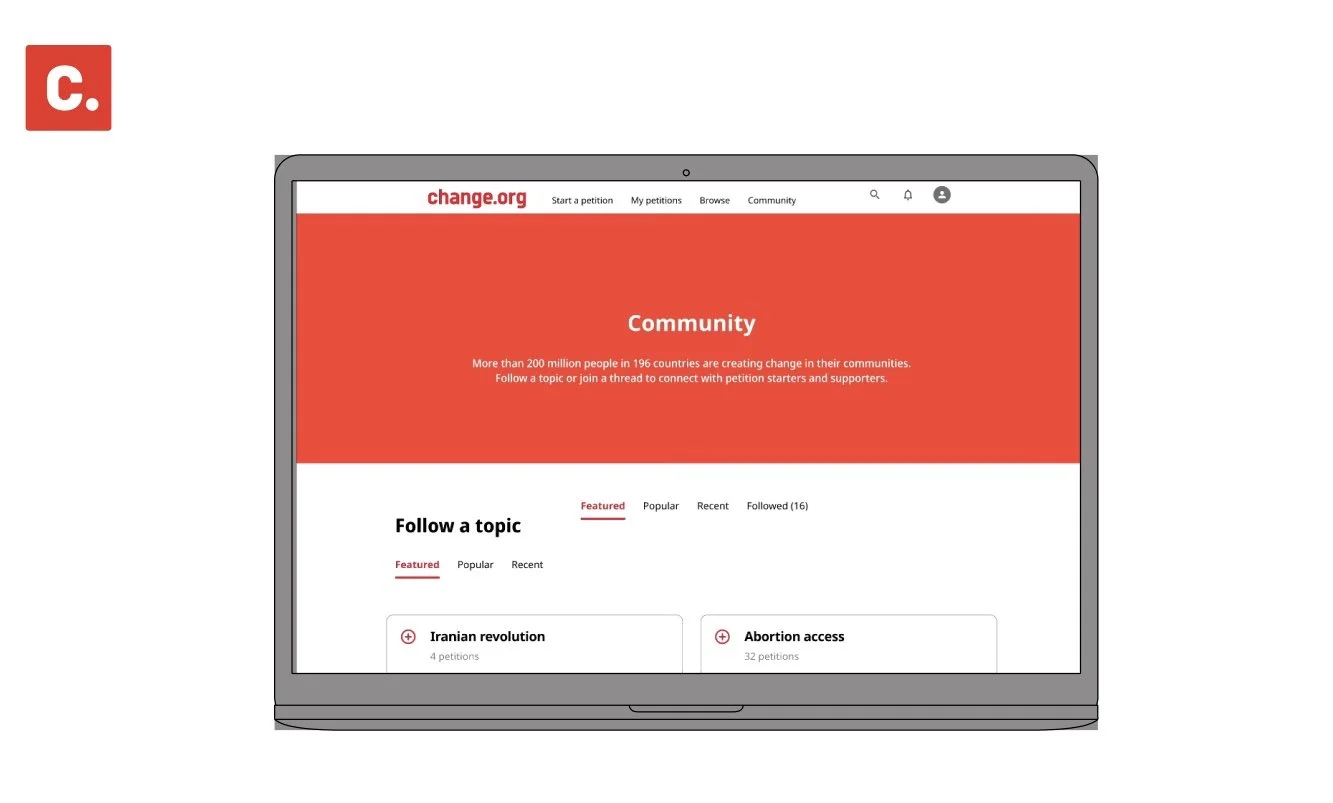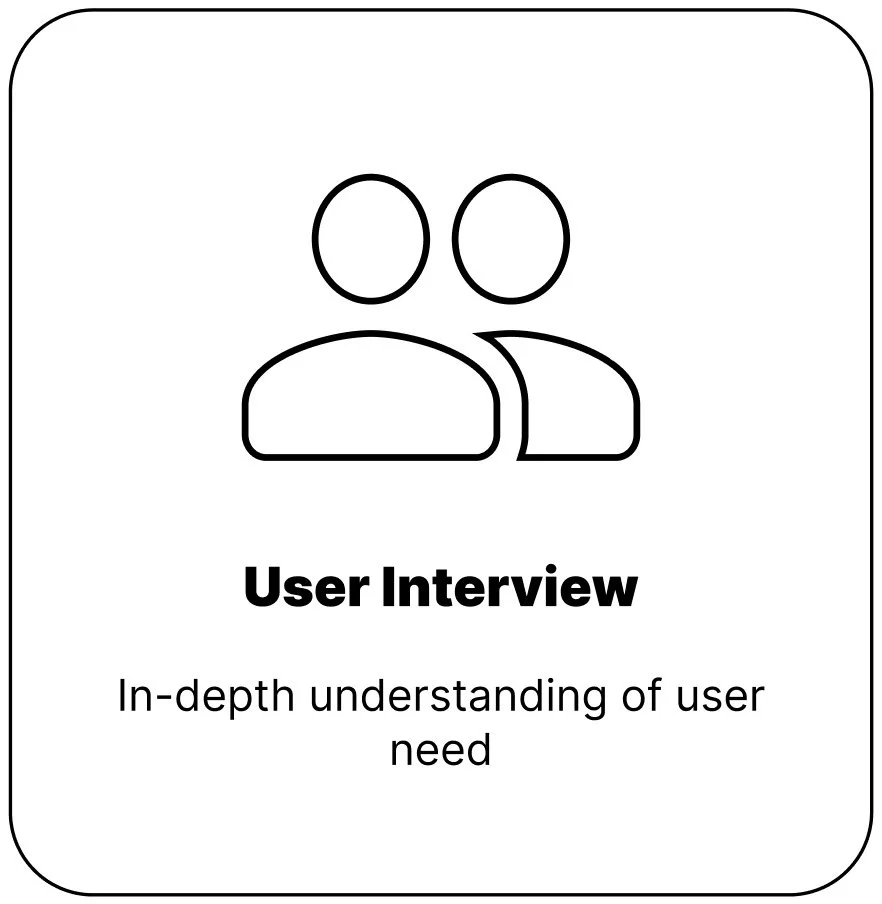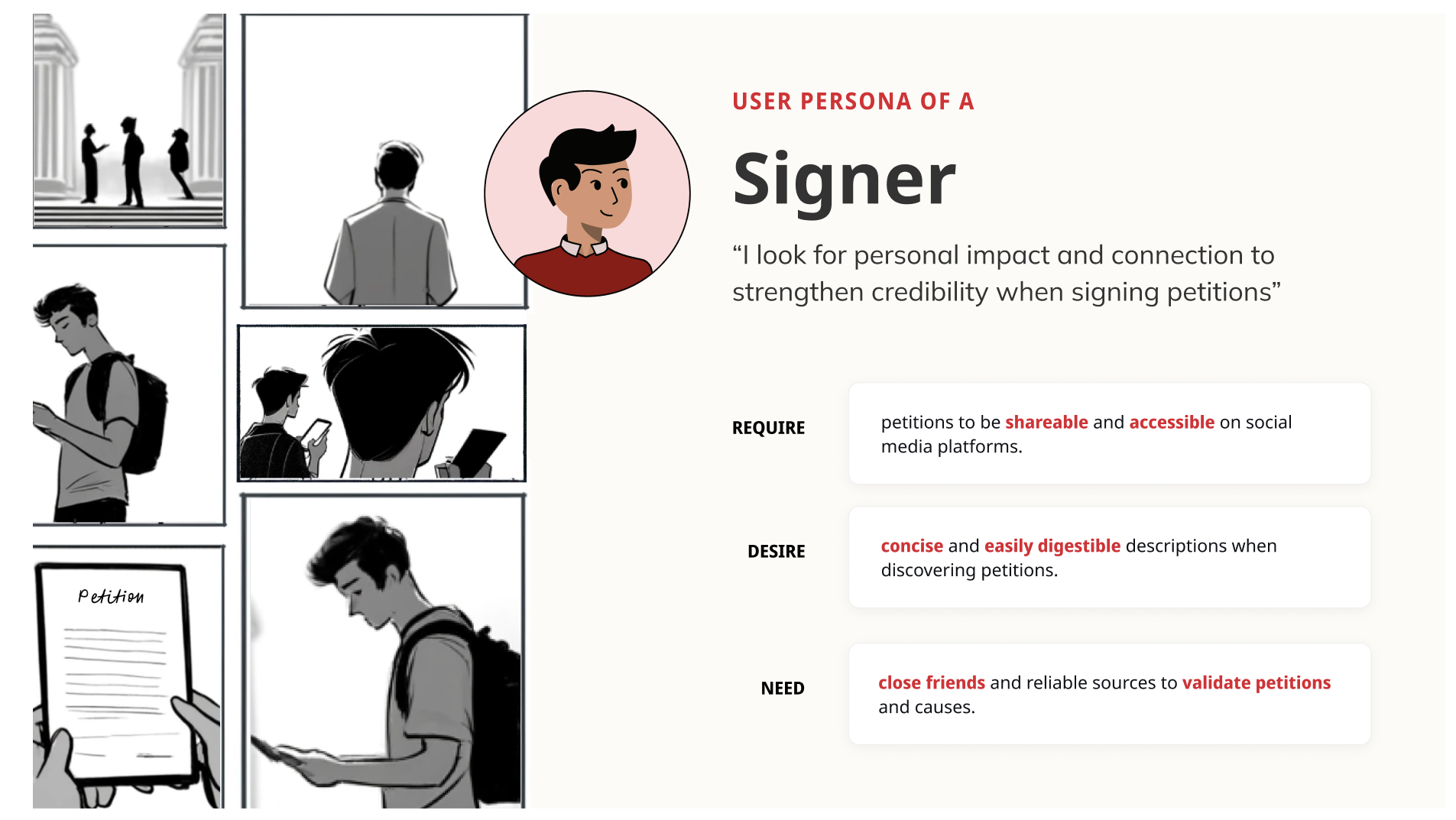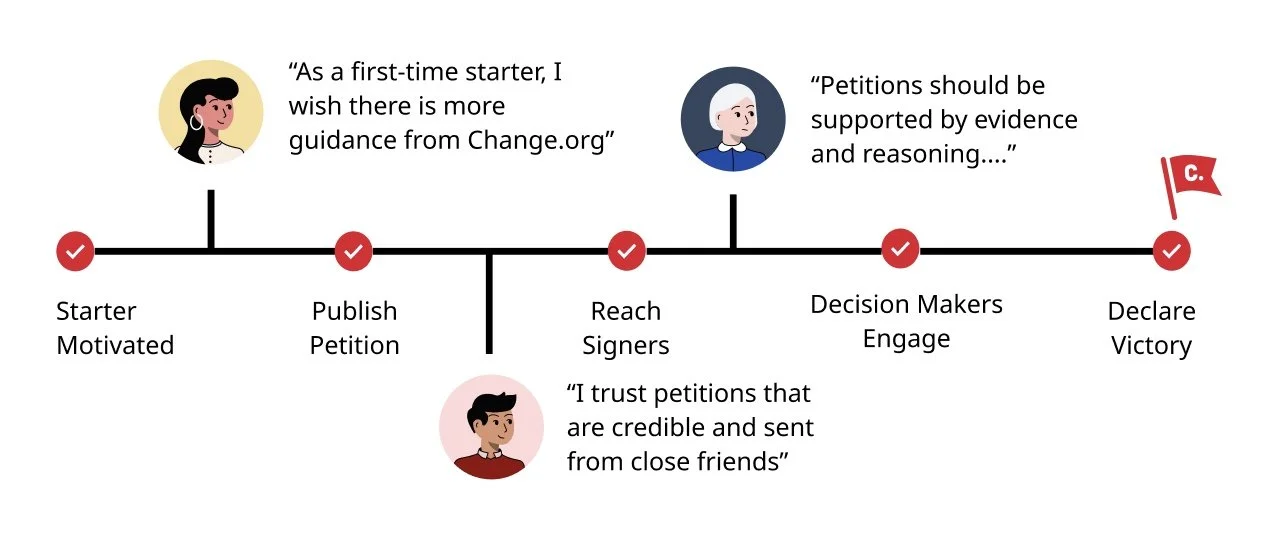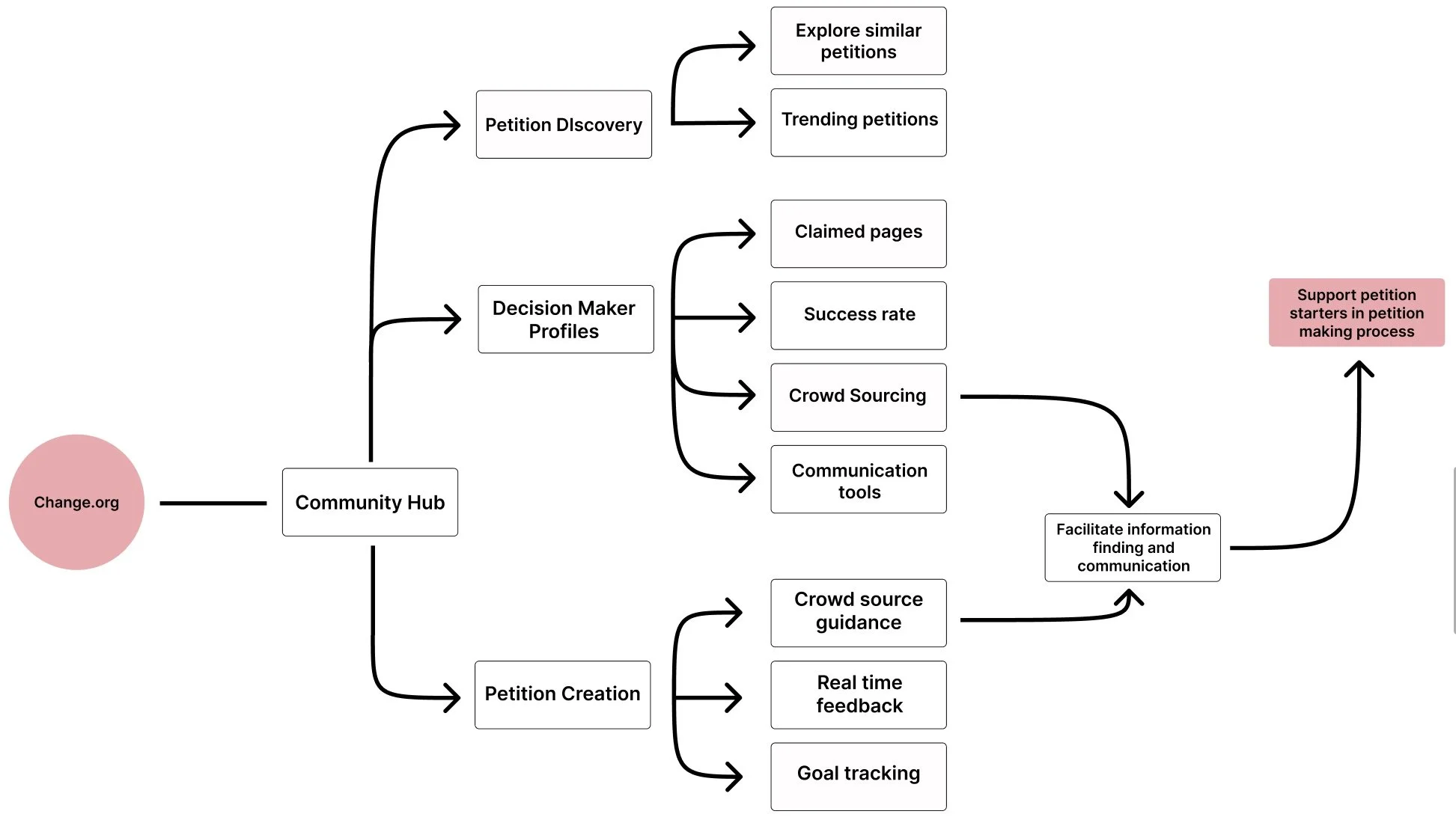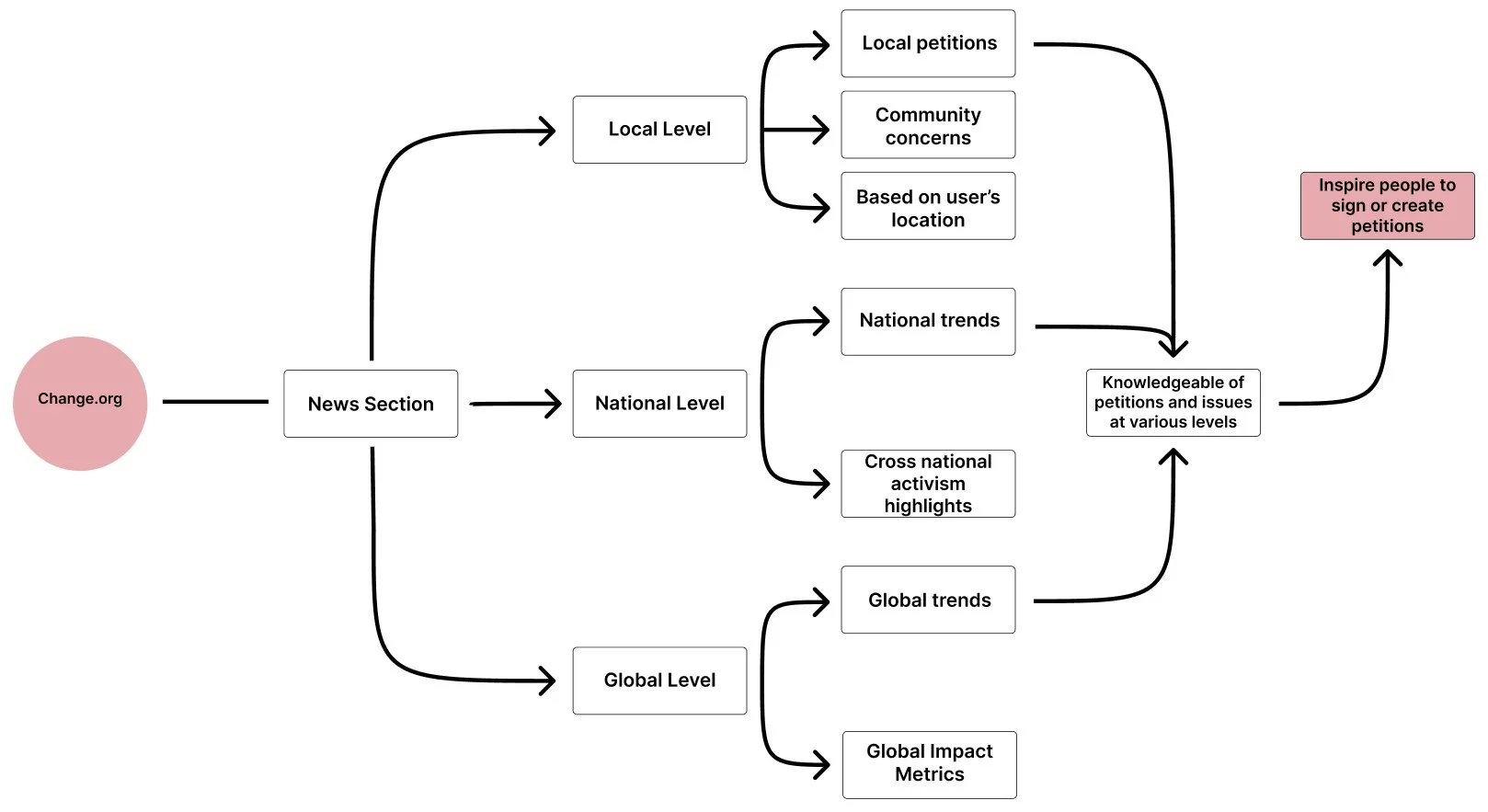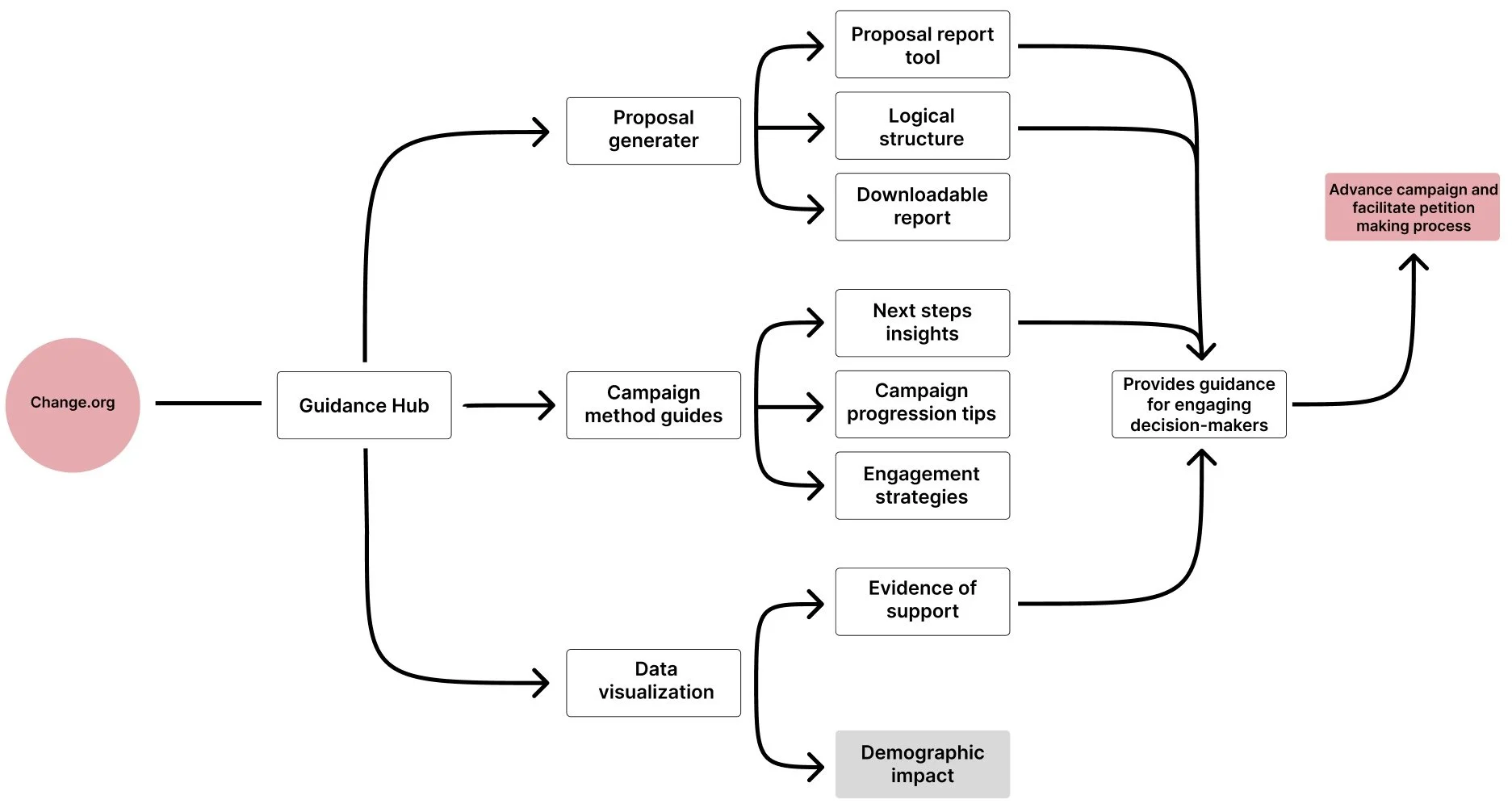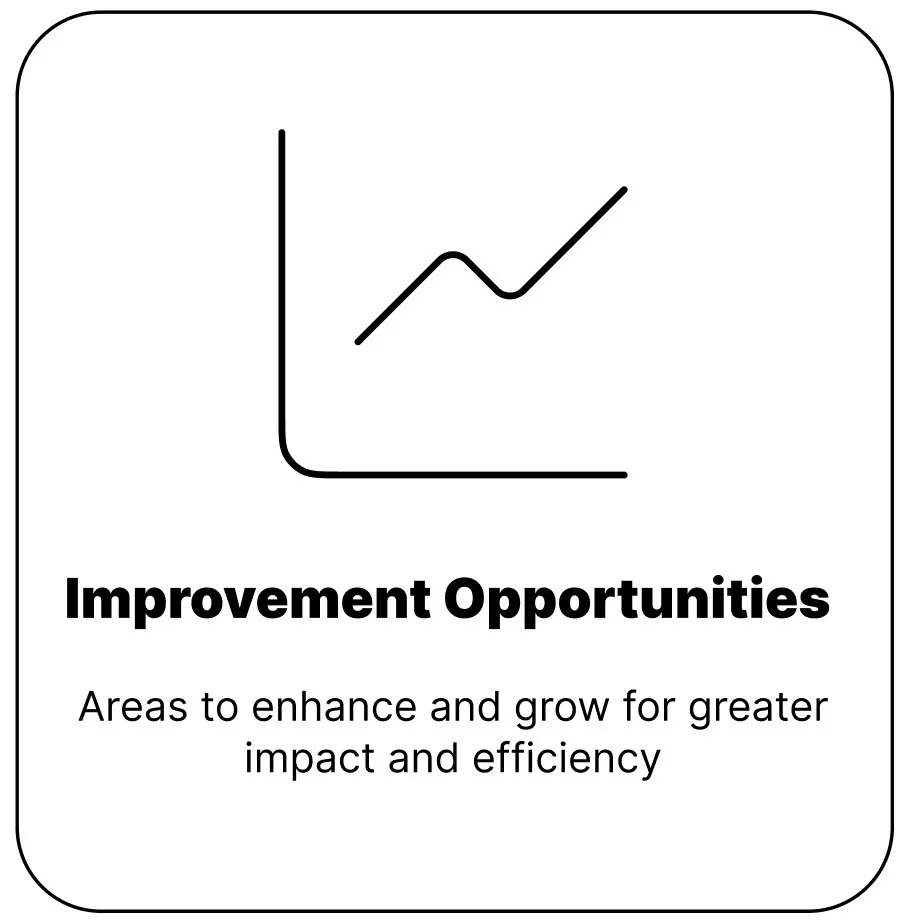A little bit about Change.Org …
ChangChange.org is a global online platform that enables individuals to drive social change by creating and signing petitions. Since its founding in 2007, it has provided a space for people from all backgrounds to raise awareness about issues ranging from local community matters to large-scale political movements. By simplifying the process of mobilizing support and holding decision-makers accountable, Change.org empowers grassroots activism and has played a key role in shaping policies, advancing social justice, and supporting charitable causes worldwide.
Student-led petitions represent a significant portion of the platform’s activity, often generating widespread engagement. However, many struggle to translate online momentum into tangible real-world impact. What sets successful petitions apart from those that lose traction or fail to influence decision-makers?
Change.org Case Study
The World’s Platform for Change
My Role: UX Design Researcher
Scope: 4 Months
Tools: Figma
Skills: UX research, Wire framing, prototyping, UX design,
Team: Eric Wang, Andy vo, Tung Nguyen, Ilgin Cevik, Victor Diaz
Essential Question
Student-led petitions represent a significant share of activity, often attracting rapid support but struggling to sustain momentum or influence decision-makers.
The Problem
set up petition starters up for success, keep student signers engaged after signing, and make decision makers’ process more transparent?
How might we gain insight into the user journey of on-campus petition starters, signers, and decision-makers?
Goal
Research
User Interview
We interviewed 15 people across the potion making process open campus ranging from students, campus organizations, and school administrators. we asked questions surrounding how they come across petitions, motivations of stating or signing a potions and their general experiencing with petitions
Petition Starter
Starts a petition as accumulation of real life or casual events
Desires transparency in data and better visualization tools to track petition progress.
Wants tools to easily find Decision Makers and collect relevant information to build solid, objective claims.
Wants multilingual features to increase accessibility.
Petition Signer
level of research by petition signers varies widely: some trust the platform or social connections without fact-checking, others do light research through social media, while some thoroughly research the issue before signing.
May feel uneasy or anxious about fully understanding the petition's values, impact, and purpose after signing.
Is more likely to engage if the cause has personal significance or represents a larger-scale impact.
More likely to sign if the petition already has high support volume, perceived credibility, or potential impact.
Desires clear outlines of current and future actions towards the petition’s goal.
Decision Maker
Are willing to consider and want students to reach out to them about issues.
Want to see petition makers and signers show importance and passion for their petitions, as petitions can seem “cheap” and half-hearted.
Want petition starters to consider the implications behind their proposals and consider the trade-offs.
Decision makers/team lack a structured way to response to proposals and student concerns.
Design Implications
Lack of Follow-up
Signers rarely receive updates after signing, leading to disengagement and a lack of trust in the petition process. Without clear progress updates, signers feel disconnected from the impact of their actions, reducing long-term involvement.
inefficient Decision-Making Processes
Decision-makers (DMs) encounter challenges with unstructured processes, including unclear agendas, limited tools, and communication gaps, which can slow responses to student concerns and petitions and create frustration among stakeholders
Data Transparency and Feature Limitations
Petition platforms lack advanced tools for data transparency, visualization, multilingualism, and strategic communication with decision-makers, hindering the effectiveness of advocacy efforts.
Key Insights
Across all our interviews, we complied the major focal points of users across the petition making process
Design Goals
With consideration during our design process, We prioritized change.orgs
Design for change by having your back
We do this by: prioritizing safe spaces removing elements of surprise prioritizing user trust and privacy
helping users to feel like there’s a person on the other end.finely crafting the interface
Design for change by empowering you
We do this by: giving users agency and choice prioritizing local designing interfaces that invite and encourage users to take meaningful actions giving you useful content at the right time.
Design for change by always learning
We do this by engaging in continuous dialogue with users and striving to understand their needs.
testing designs sharing lessons learned seeking out diverse perspectives.
Getting to Know Our User
User Persona
In explaining our user Personas, we created a story to help explain our stakeholders. It starts with Alyssa, a first-time petition starter on Change.org. During her journey, she faces challenges in understanding her signers and effectively communicating with decision makers
User Persona
The petition moves on to Tim. He is a potential petition signer for Alyssa’s petition. Like most petition signers on Change.org, he discovers Alyssa’s petition on social media, through an Instagram story. However, he doesn’t understand the full cause or demands of the petition.
User Persona
Once the petition is finished being created Alyssa and people like Tim sign it, it arrives to our decision maker the chancellor. The chancellor has the ability to move forward with the proposal from the petition and put it into action.the chancellor being a decision maker and a prominent figure in the community, needs to evaluate all the potential consequences when evaluating the petition
User Journey
We had an incredible opportunity to interview a diverse group of stakeholders, from students who initiated the free laundry campaign in the dorms to staff members from the Chancellor’s office and the Dean of Haas. Through these interviews, we gained valuable insights into how students start and grow their campaigns and how decision-makers respond to student proposals.
Brainstorming
Ideation
Throughout the ideation phase, we categorized our user responses with similar themes related to their experiences with petitions
Petition Starters
Petition Signers
Decision Makers
Community Hub Wireframes
users can now have access to the community hub, a dashboard-style platform to assist the petition discovery, creation, and communication process.
News Section Wireframe
A new section where petitions, like the ones created by Alyssa, can offer local, national, and global perspective and serve as a news outlet to inform what is happening in their respective region
Digital Fliers Wireframe
Customizable Instagram templates to facilitate outreach for petition starters and signers. Petition signers like Tim will have an easily digestible way to understand the cause behind a petition and is able to share it with his friends, increasing the validity of the petition.
Guidance Hub Wireframe
Provides guidance on the next steps to engaging a decision makers and insights on taking your campaign to the next level.campaign method guides, data visualizatoin for demographic impacted aspects pieced together for a logical, impactful appeal to decision makers
Final Products
Community Hub Final Deliverable
Imagined a community hub for guidance, support,
and potential endorsements for petition starters
News Section Final Deliverable
Refined landing page to foster stronger off-line
bonds through a local map, bolstering connectivity between users
Digital Fliers Final Deliverable
Improved formats for gaining awareness by designing easy-to-use social media templates
Guidance Hub Final Deliverable
Enhanced starter dashboard to include “proposal generator” that compiles visual data with logical reasoning for improved chance of victory
Final Thoughts
Key Takeaways and Reflection
Lessons Learned
User Interviews can be tough
Your creativity can be the base of several solutions
Focus on the bigger picture
Improvement Opportunities
Enhance Collaborative Features
Develop A/B Testing
